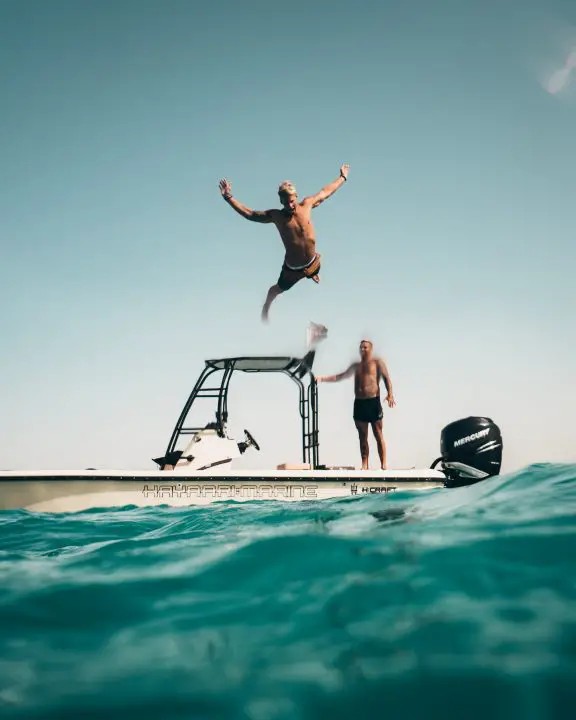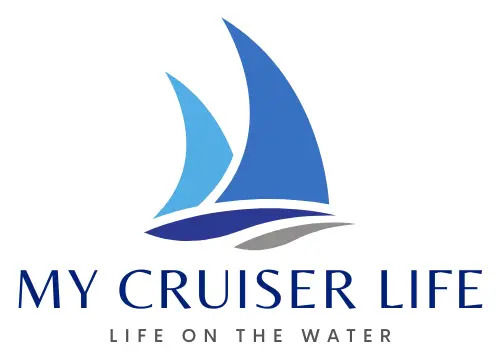You might want to start a boat out of the water for many reasons, from boat maintenance to just running it to circulate its oil. But without care, running the boat’s engine dry can cause damage. This is because boat engines depend on the water around them to cool their internal parts, just like cars need water in their radiators.
So, should it be done? And if so, how is it done without damaging anything? Here’s a look at how to do it safely.

Table of Contents
- Can You Start a Boat Out of Water – Good Idea or Bad?
- What If You Accidently Started Your Boat Out of the Water?
- How to Start a Boat Out of Water
- How to Start a Boat Motor Out of the Water?
- FAQs (Frequently Asked Questions)
Can You Start a Boat Out of Water – Good Idea or Bad?
Let’s set the record straight right now–it’s a bad idea.
Here’s why.
- Boat engines use raw water for cooling, and the water pump relies on a small rubber impeller to draw water from outside the boat.
- Running the pump out of water causes rapid heat buildup inside the pump, leading to the impeller rubbing against the pump housing walls.
- In a matter of seconds, the impeller can begin to fail, especially if there are sand, grit, or salt deposits in the pump or water lines.
- A failing impeller can break apart, with bits potentially clogging the engine’s water passageways.
- These issues decrease the water pump’s effectiveness and reduce the engine’s cooling capacity.
- While the impeller is a relatively inexpensive service part that should be replaced annually, replacing the pump housing is much more costly.
- Replacing the impeller is time-consuming, requiring removal of the entire lower unit, and can cost $300 or more if done by a mechanic.
Nearly every marine engine uses raw water to cool itself. Most people believe that since they are only starting the engine–not leaving the engine running or letting it get hot–it will be fine. But this overlooks the problems you’ll have in the future.
The water pump of a boat engine uses a small rubber impeller to suck water from outside the boat through the motor. The rubber is soft and flexible. The pump housing is cast from aluminum or bronze and has no lubrication other than the water moving through it. The pump’s drive shaft is connected to the engine drive shaft–so if the motor is on, the pump is always spinning.
If you run the pump out of the water, heat builds up quickly inside the pump. The rubber blades of the impeller rub the walls of the pump housing. In a matter of seconds, the impeller will begin failing. If there are any sand, grit, or salt deposits in the pump or water lines, the impeller will begin rubbing and scoring the pump housing. If the impeller starts breaking apart, bits of it can get sucked farther into the engine, where it could clog up the water passageways.
All of these things decrease the effectiveness of your water pump and decrease the amount of cooling your engine gets. The rubber impeller is a service part you should replace at least annually. Sidenote: When was the last time you replaced your impeller?
But replacing the pump housing is much more expensive. And even though the impeller is a $10 or $15 part, it still takes the better part of an hour to get the job done, even if you’ve done it many times. The whole lower unit needs to come off the motor! Expect a mechanic to charge $300 or more for the job.
What If You Accidently Started Your Boat Out of the Water?
Okay, so your numb-skull brother-in-law started your boat out of the water. If you caught him in the act or he fessed up, there are a few things you can do now to make sure no further damage is done.
If he didn’t fess up and you didn’t catch him, you might have no idea what happened until things start going wrong.
Any overheating signs indicate it’s time to replace your impeller. Impellers are cheap, and if you’re handy, it’s a good idea to keep a few on hand.
Signs of overheating might include the following. These are just a few of the ways of how to tell if your outboard water pump is bad.
- Tell-tale (aka the “pee hole”) water flow reduced
- The water temperature gauge is rising (unfortunately, many boats lack this vital gauge!)
- Overheating alarm
- Loss of power
- Inability to add power
- Boat won’t plane
- Engine stops unexpectedly
The most important part of this list is the first item. Marine engines have a visual indicator to let you see the water flowing through the engine. On outboards, this is a tell-tale–a small, steady stream of water that shoots off to the side of the engine. If the flow of this water ever changes or goes away, check your impeller ASAP.
So if you have a clue that your pump might be going bad or is already shot, get on replacing it or call the mechanic.
How to Start a Boat Out of Water
So your boat is on the trailer or in the yard, and you need to run it. Here’s how to run a boat motor out of the water.
Outboard Engines or Outboard-Inboard (I/O) Boats
Outboard motors pick up their outside water using inlet screens just above the lower unit’s propeller. The water pump and impeller are inside the lower unit, just above those inlets.
The best way to start your motor out of the water is to attach a flushing kit over those inlets. A flushing kit, sometimes called ear muffs or motor flusher muffs, attaches to a garden hose and fits snugly over the inlets.
Turn the hose on full blast. Water will spray in every direction, but it’s okay. Now you can start the engine because there’s plenty of fresh water for the impeller to work fine. Run the engine as long as you need, but don’t go much above idle. You will see water coming out of the tell-tale, but it might not be as forceful as it is when in the water.
Alternatively, you could use a large trash can or bucket underneath the engine instead of a flush kit. The key is to ensure that the intake ports on the lower unit are completely submerged and not sucking any air. Leave the hose running into the bucket while the motor runs so the water supply doesn’t get too low.
Inboard Boat Engine
Inboard motors get their outside water through a through-hull fitting (water intake hole) somewhere on the hull. Your boat probably has a few of them, which may look similar. Make sure you’re supplying water to the right one.
Similar to outboards, you can buy a garden hose attachment for inboard boats at your local marine store. They look like a fancy toilet plunger. However, these have a habit of popping off, so use them carefully.
There’s generally no way to make a bucket or trash can work with this type of engine. You could go inside the boat and supply water through the strainer. Better yet, take the hose off between the strainer and the motor. Then, plug the garden water hose directly into that. You’ll need some fittings from your hardware store, of course. Make sure you put it all back together when you’re done, and ensure all hose clamps are replaced and secure. Double check them the next time you run the boat.
- Designed to flush sand, silt, and alkali from your inboard engine
- Easily installs on raw water strainer for inboard engines without tools
- Telescoping shaft ensures precise alignment, especially in hard-to-reach areas
- Shaft length: 18-1/2 to 31 inches
- Large diameter suction cup eliminates fall-off or blow-by while flushing
Prices pulled from the Amazon Product Advertising API on:
Product prices and availability are accurate as of the date/time indicated and are subject to change. Any price and availability information displayed on [relevant Amazon Site(s), as applicable] at the time of purchase will apply to the purchase of this product.
Many newer boats come with some plumbing built-in that makes flushing the engine easy. Some of these systems are designed to run water through the system to clean it out but shouldn’t be used when the motor is running. Read your engine’s owner’s manual to figure out exactly how you use yours and whether starting a boat out of water is okay. Always follow the manufacturer’s recommendations to the letter–there should be a step-by-step guide in the manual.
How to Start a Boat Motor Out of the Water?
With caution! Don’t just turn the key; take the time to do it right. Your motor will thank you, as will Future You. Future You will be very happy about all the money you saved them.
For more boat troubleshooting:
FAQs (Frequently Asked Questions)
How long can a boat engine run out of water?
There is no acceptable amount of time to run a boat engine out of the water. If you’re on dry land and need to start your boat engine, you need to find a way to hook the motor up to a hose and supply it with cooling water first. Starting the engine–even for a moment–can cause damage to the water pump and cause overheating issues in the future.
Can I start my inboard boat out of water?
No. Doing so will damage the raw water impeller. Instead, you will need to find a way to attach a garden hose to run the engine so that it has plenty of cooling water flowing through the system.
Does boat motor need to be in water to start?
Yes, absolutely. Starting an engine out of the water will damage its water pump.
What happens if you start an outboard out of water?
An outboard engine is cooled by raw seawater, fed through the engine by a rubber impeller. The impeller is mounted on the driveshaft and spins whenever the engine spins. The rubber impeller relies on the water to lubricate it as it spins. If it is run dry, it is easily damaged. This will lead to problems with your engine overheating the next time you head out on the water.





Can I start an electric outboard engine our of water?